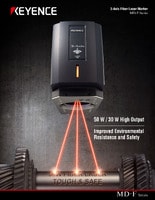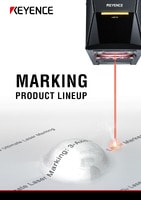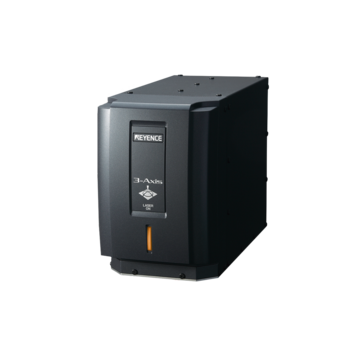Industrial Laser Marking Systems / Laser Markers
Laser Marking Drivetrains
-
Tags:
- Automotive , Electric Vehicle , Laser Marking
Did you know that over 10 million vehicles were recalled in the year 2022 alone? The recalls ranged from engine problems to oil leaks to airbags not deploying. With the diversity of recalls, imagine if there was no way to figure out where the defective part originated from.
Luckily, there are many regulations and processes in place so that we don’t have to experience that. The use of part marking, and in this blog’s case, laser marking drivetrains, helps minimise response times and help proactively address any issues.
Laser marking drivetrains adds traceability and assembly marks that ensure recalls move swiftly. Of course, there are other marking options, but the laser industry is gaining exponential traction for laser marking automotive parts because of laser efficiency, environmental benefits, and readability.
Hundreds of parts make up a vehicle, but in this article, we’ll look specifically at the drivetrain, the component that connects the engine to the wheels. We will also explore how laser marking is benefiting the drivetrain and its gears with permanency, readability, and traceability.
What is Laser Marking?
Laser marking is a no-contact method that uses a laser beam to mark a target with a design, logo, 2D code, character, or barcode. The term “laser marking” is a general term that encapsulates four laser processes: annealing, etching, engraving, and carbon migration. All these methods use a laser marking machine, but each uses a laser beam differently.
Laser Annealing
Laser annealing adds a textureless black mark onto a surface. Annealing happens when the laser beam hits the target and heats it until the atoms reach the surface and reorganise into an oxide layer design.
Laser Carbon Migration
Laser carbon migration also adds a textureless black mark. However, instead of leaving an oxide layer, the carbide properties activate the black layer.
Laser Etching
Laser etching is a method that adds raised marks. The laser beam electrifies a target and heats it until its liquidation point. The target then partially absorbs and partially reflects the beam while immediately cooling off. In seconds, the target has a raised mark.
Laser Engraving
Laser engraving creates an indented mark. The beam hits the surface and changes the target from a solid to a gas in an instant. The vaporised material leaves behind an indented design.
We’re here to provide you with more details.
Reach out today!

What are the Benefits of Laser Marking Drivetrains?
Any of the four methods mentioned can be used for laser marking drivetrains, and all reap the same benefits.
Permanency
Drivetrain parts come in contact with friction, oil, environmental conditions, and corrosion, so they need a mark that will withstand all the elements. Laser part marking is permanent, so the mark will always be read regardless of the situation.
Traceability and Identification
Traceability is a crucial practice in the automotive industry to ensure safety, prevent counterfeits, and streamline the recall process. Laser marking machines mark characters, barcodes, 2D codes, GS1 DataBars, and logo images for traceability and identification.
Each part of a drivetrain was likely produced at a different shop floor, so marking each one helps identify the manufacturing plant that the defective part came from. Without laser part marking, manufacturers would have to investigate every plant that produced every part of the drivetrain.
High-Speed
Laser part marking—whether that be etching, annealing, or engraving—only takes a few seconds. It’s faster than screen printing (labeling), chemical etching, and ink printing.
Discover more about this product.
Click here to book your demo.

What are the Benefits of Laser Marking Pinions and Ring Gears?
The size, shape, and material of pinion and ring gears make marking a tedious process that may threaten assembly and use. Using a laser keeps your gears up to regulatory standards without hurting them.
Ensures Readability
The shape of pinions and ring gears leaves hardly any room for marks from chemical etching, labels, or ink. However, because of the precision and thin beam of the laser, a laser can mark a readable traceability or identification mark onto these gears.
Assembly Identification
It’s safe to assume that if you’re working with automotive parts all day, you’re pretty familiar with which part is which. However, it’s always better to be safe than sorry. Since laser part marking is readable and permanent, the mark is an indicator for keeping the assembly process in check.
Damage Free
It’s common for ring and pinion gears to have a layer of anti-corrosion coating added. Using a laser marker allows you to add the marks you need without ruining the anti-corrosion layer.
Alternatively, other marking methods like dot peening and chemical etching ruin the layer.
Curious about our pricing?
Click here to find out more.

What are the Benefits of Laser Cleaning Ring Gears?
Laser cleaning uses the same vaporising process as laser engraving, but it does not make an indented mark. Instead, laser cleaning vaporises the top layer and leaves behind a clean and undamaged layer.
Fast
Laser cleaning gears takes only seconds per gear, depending on the size. Compare this to shot blasting and chemical etching that take hours or days for the complete process.
No Extra Regulatory Tasks
Laser cleaning gears do not require regulatory paperwork that needs to be reported to the Environmental Protection Agency (EPA).
The EPA tracks the use of toxins that show up in cleaning methods like chemical etching and sandblasting. The Code of Federal Regulations includes a regulation, 40 CFR 433.12, that states that companies submit paperwork stating:
- 1. Solvent management plan explaining which toxic compounds are used
- 2. Method of disposal
- 3. Procedural tasks preventing toxins from entering bodies of water
Completing and filing this paperwork adds administrative work that can slow down production or increase costs because of compliance issues.
All Teeth are Cleaned
Ring gears have small teeth that are pesky to clean out. Laser cleaning gears uses a controlled beam that has the exact focus to get in between each tooth.
You may have opted for shot blasting or chemical etching in the past because gears are too tedious to clean with a manual tool. However, these methods do not target each area the way a laser does.
Discover more about this product.
Click here to book your demo.

What Laser System Should be Used for Vehicle Drive Trains?
Vehicle drive trains are made of metals like aluminium and steel alloys. The most compatible lasers for laser marking drivetrains are hybrid and fibre lasers.
Fibre lasers are known for high speed and power. The high power is strong enough to mark even on hard metals like steel. Likewise, the fast speed makes them ideal for large manufacturing projects.
KEYENCE’s Fibre Laser
KEYENCE’s fibre laser is called the 3-Axis Fibre Laser MD-F Series. This laser can engrave, etch, anneal, and activate carbon migration. It can mark characters, barcodes, 2D codes, GS1 DataBars, and logos as small as .1 mm and up to 300 mm.
The MD-F uses a 3-axis control to adjust the focal point for distortionless marking on any complex shape; inclined, cylindrical, cones, and stepped.
Get detailed information on our products by downloading our catalogue.
View Catalogue

Ready to Buy a Fibre Laser?
If you want to add marks in seconds, steer clear of regulatory paperwork, and modernise your traceability for drivetrains and other components, then you are ready for a fibre laser.
At KEYENCE, we got you covered. Our team will help you switch to laser marking by answering all your questions and providing a demo for you. Contact us today to implement a fibre laser into your marking and cleaning needs.
We’re here to provide you with more details.
Reach out today!


![Laser marker application samples for Automotive industry [Body & Exterior parts]](/img/asset/AS_101893_L.jpg)


